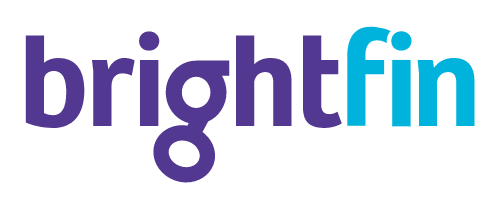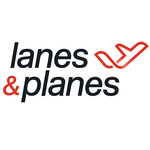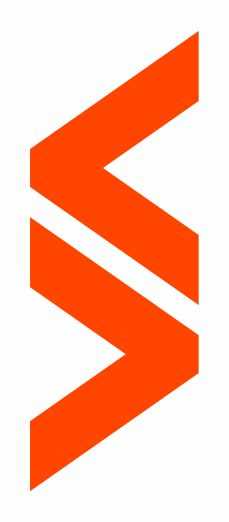Description

SRXP

Xpenditure Expenses
Comprehensive Overview: SRXP vs Xpenditure Expenses
SRXP and Xpenditure Expenses are both expense management solutions designed to streamline and automate the process of managing employee expenses. Here’s an overview of each:
a) Primary Functions and Target Markets
SRXP:
- Primary Functions: SRXP provides a cloud-based platform that facilitates digital receipt management, real-time expense claim submission, and comprehensive reporting. It enables users to scan receipts, link them to expense categories, and submit claims for approval via a mobile app. SRXP integrates with various accounting systems to ensure seamless financial workflows.
- Target Markets: SRXP focuses on medium to large enterprises looking to enhance their expense management efficiency. It is particularly popular in Europe and among companies operating across multiple countries due to its multi-language support and compliance with various tax regulations.
Xpenditure Expenses:
- Primary Functions: Xpenditure offers tools for receipt scanning, expense tracking, and automated reports. The platform emphasizes simplicity and efficiency, allowing users to manage expenses via a mobile app or web interface. It also integrates with major accounting and ERP systems, providing an end-to-end expense management solution.
- Target Markets: Xpenditure primarily targets small to medium-sized businesses (SMBs) and freelancers. It appeals to businesses in need of a straightforward, cost-effective expense solution without the complexity of traditional expense management tools.
b) Market Share and User Base
- SRXP tends to have a stronger presence in medium to large enterprises, especially within Europe. Its market share in the enterprise segment is noteworthy, as it caters to businesses with substantial expense management needs across various regions.
- Xpenditure, now part of the larger Rydoo platform (post-acquisition), caters more to SMBs and freelancers. This part of the market is expansive, but competition is fierce. Xpenditure’s integration within Rydoo has broadened its reach, but it maintains a focus on smaller organizations.
Due to SRXP's focus on larger enterprises, its user base may be smaller in number but includes higher usage intensity and larger transaction volumes per user. Xpenditure, with its appeal to SMBs, likely has a broader but less transaction-intensive user base.
c) Key Differentiating Factors
-
Target Audience:
- SRXP is tailored more for larger enterprises with complex needs and requirements, whereas Xpenditure appeals to smaller businesses and individual users who require simplicity and ease of use.
-
User Experience:
- SRXP offers more robust features suitable for enterprises, such as enhanced reporting tools and team management capabilities.
- Xpenditure focuses on delivering a simple, user-friendly experience, making it an attractive option for businesses with limited resources to dedicate to expense management.
-
Integration and Scalability:
- SRXP offers integrations that fit larger systems and can handle extensive data volumes, reflecting its focus on scalability for large enterprises.
- Although Xpenditure integrates well into various systems, its design favors quick setup and straightforward implementations suitable for small businesses.
-
Pricing Models:
- SRXP may employ a pricing model aligned with enterprise-level budgets and expectations, whereas Xpenditure's pricing likely remains more accessible for small to medium businesses.
In conclusion, both SRXP and Xpenditure serve the critical function of expense management with distinct niches; SRXP for the needs of larger enterprises, and Xpenditure (now part of Rydoo) for smaller operations and freelancers seeking simplicity and efficiency.
Contact Info

Year founded :
2010
+31 20 261 1711
Not Available
Netherlands
Not Available

Year founded :
Not Available
Not Available
Not Available
Not Available
Not Available
Feature Similarity Breakdown: SRXP, Xpenditure Expenses
As of the latest available information, both SRXP and Xpenditure Expenses (now known as Rydoo) are platforms designed to facilitate expense management and streamline financial operations for businesses. Below is a breakdown of their feature similarities, differences in user interfaces, and unique features:
a) Core Features in Common
-
Expense Tracking: Both platforms allow users to capture and track expenses by uploading receipts, either via mobile apps or desktop interfaces.
-
Receipt Scanning and OCR: They offer Optical Character Recognition (OCR) technology to automatically extract data from receipts, reducing manual data entry.
-
Automated Workflows: Both support the creation of custom workflows and approval processes that align with organizational policies.
-
Integration with Accounting Software: They integrate with popular accounting and ERP systems like SAP, QuickBooks, and Xero to streamline data flow.
-
Multi-Currency Support: Users can submit expenses in multiple currencies, and both platforms can handle currency conversions.
-
Policy Compliance: They help enforce compliance with company policies by flagging out-of-policy expenses.
-
Reporting and Analytics: Both provide robust reporting tools to analyze spending patterns and optimize expense management.
-
Mobile Apps: Available for iOS and Android, offering the convenience of managing expenses on the go.
b) User Interface Comparison
-
SRXP: The SRXP user interface is generally regarded as straightforward and user-friendly, focusing on simplicity and ease of use. The dashboard is clean, with intuitive navigation that helps users quickly find necessary features.
-
Xpenditure (Rydoo): Xpenditure offers a modern, sleek interface with a focus on usability and aesthetic appeal. The platform offers a more visual experience with clear dashboards and intuitive navigation paths that aim to reduce the learning curve for new users.
Overall, both platforms are designed to be accessible to users with varying technical proficiency, though Xpenditure leans more towards providing a visually appealing experience.
c) Unique Features
-
SRXP:
- Customization Options: SRXP allows a high degree of customization in setting up workflows, which may be more flexible than some competitors.
- Dutch Market Focus: Originally rooted in the Dutch market, SRXP offers specific features tailored for local users, like VAT returns compliance with Dutch laws.
-
Xpenditure (Rydoo):
- Travel Management Integration: Rydoo extends its functionality beyond expenses by incorporating travel management features, allowing users to book and manage travel itineraries within the same platform.
- Time and Project Tracking: Offers additional modules for time tracking and project management, enabling users to bill hours and manage project-related expenses efficiently.
While both platforms cover the fundamental requirements for expense management, the choice between them may depend on specific organizational needs, such as the necessity for travel management integration or local compliance requirements.
Features

Expense Management
Integration Capabilities
User Experience
Approval Workflow

Expense Management
Integration
Expense Tracking
Analytics and Reporting
Best Fit Use Cases: SRXP, Xpenditure Expenses
SRXP and Xpenditure Expenses are both expense management solutions designed to streamline and automate expense reports, reimbursements, and financial tracking. Each tool caters to specific business needs and scenarios, making them more suitable for different types of businesses and projects. Below is an overview of the best-fit use cases for each, organized based on their strengths:
SRXP
a) For what types of businesses or projects is SRXP the best choice?
-
Medium to Large Enterprises: SRXP is particularly suited for larger organizations that require robust expense management features. Its ability to handle high volumes of expenses and integrate seamlessly with existing ERP systems makes it ideal for companies with complex financial processes.
-
International Companies: SRXP offers strong support for international operations, including multi-currency handling and compliance with various tax regulations across countries. This makes it suitable for companies with global operations.
-
Project-Driven Businesses: Businesses that work on multiple projects simultaneously, such as consulting firms or construction companies, can benefit from SRXP's detailed project expense tracking capabilities.
-
Industries with Stringent Compliance Needs: Industries such as pharmaceuticals, finance, and government where compliance and regulatory requirements are strict will find SRXP's extensive compliance features beneficial.
Xpenditure Expenses
b) In what scenarios would Xpenditure Expenses be the preferred option?
-
Small to Medium-Sized Businesses (SMBs): Xpenditure is often preferred by SMBs due to its user-friendly interface and affordability, which suits businesses looking for a simple, efficient solution without the complexities of larger systems.
-
Startups and Fast-Growing Companies: Startups that need to quickly set up an expense management system without extensive IT investments or complex installation processes would find Xpenditure ideal.
-
Remote or Decentralized Teams: Companies with remote workers or decentralized teams can take advantage of Xpenditure's mobile-first approach, allowing employees to manage expenses on-the-go.
-
Industries with High Travel Expenditure: Companies in industries such as sales, marketing, or consulting, where employees incur frequent travel expenses, can leverage the tool's efficient receipt scanning and reimbursement capabilities.
Catering to Different Industry Verticals or Company Sizes
SRXP:
- Customizable Workflows and Reporting: SRXP offers extensive customization options in terms of workflows, approval processes, and reporting, making it a fit for industries needing tailored solutions, such as manufacturing and healthcare.
- API Integrations: It provides enhanced integration capabilities with major accounting and ERP systems, making it a great choice for large enterprises needing smooth data exchange across systems.
Xpenditure Expenses:
- Scalability for Growing Businesses: Xpenditure provides scalability that supports growing teams and increasing transaction volumes without a proportional increase in costs.
- Simplified Setup and Maintenance: Its ease of setup and minimal maintenance requirements are appealing to companies with limited IT resources, often found in retail and education sectors.
Both SRXP and Xpenditure Expenses offer solutions that can be adapted to specific business needs, but their design and functionality cater to different organizational sizes and industry-specific requirements, which should be considered when selecting an expense management tool.
Pricing

Pricing Not Available

Pricing Not Available
Metrics History
Metrics History
Comparing undefined across companies
Conclusion & Final Verdict: SRXP vs Xpenditure Expenses
Conclusion and Final Verdict
When evaluating expense management solutions like SRXP and Xpenditure Expenses, multiple factors come into play, including ease of use, features, integration capabilities, cost, customer support, and scalability. Here's a breakdown of both tools concerning these aspects:
a) Which Product Offers the Best Overall Value?
Xpenditure Expenses: Xpenditure Expenses tends to offer better overall value for businesses looking for a comprehensive suite of features along with an intuitive interface and extensive integration capabilities with popular accounting software. It is well-suited for companies that require a scalable solution with advanced reporting features.
b) Pros and Cons
SRXP
-
Pros:
- User-Friendly: Known for a straightforward and intuitive user interface that makes it easy for employees to submit expenses quickly.
- Strong Mobile App: The mobile application is robust, offering convenient on-the-go expense reporting.
- Customizable Workflows: Allows for custom workflow setups that can fit specific business needs.
-
Cons:
- Integration Limitations: While it integrates with major accounting systems, it may not have the extensive list of integrations that some competitors provide.
- Pricing Structure: The pricing can become a concern for smaller businesses due to its tiered structure based on features and user numbers.
Xpenditure Expenses
-
Pros:
- Feature-Rich: Offers a comprehensive set of features, including detailed analytics, multi-currency support, and VAT tracking.
- Seamless Integrations: Provides extensive integration options with major accounting and ERP systems to streamline financial management.
- Scalable: Suitable for businesses of all sizes and can easily scale with business growth.
-
Cons:
- Learning Curve: Some users may find the platform's extensive features overwhelming at first, requiring a bit of time to fully harness its capabilities.
- Cost: While the features justify the cost, it might be on the pricier side, particularly for very small businesses or startups.
c) Recommendations for Users
-
For Small to Medium Enterprises (SMEs): If you prioritize a user-friendly interface and customizable workflows, SRXP might be the better choice. Its straightforward setup makes it ideal for businesses that do not need the full spectrum of features offered by Xpenditure.
-
For Larger Enterprises or Growth-Focused Businesses: Xpenditure Expenses is recommended for larger companies or those anticipating growth, where a robust feature set and deep integrations are necessary. If cost is not the primary constraint, the comprehensive capabilities of Xpenditure will provide long-term value.
-
Trial Periods and Pilot Tests: It's advisable for businesses to leverage free trials or pilot programs when offered, to assess the practical utility of each tool in their actual business processes. This helps in making an informed decision based on firsthand experience.
-
Consider Future Needs: Businesses should also consider their potential future needs for expense management, ensuring that their chosen platform can scale and incorporate more complex features as their operations grow.
By carefully evaluating these points, businesses can make an informed decision aligned with their needs and growth objectives.
Add to compare
Add similar companies



